1 Introduction
2 High-Dimensional Space
2.2 The Law of Large Numbers
2.3 The Geometry of High Dimensions
2.4 Properties of the Unit Ball
2.5 Generating Points Uniformly at Random from a Ball
2.6 Gaussians in High Dimension
2.7 Random Projection and Johnson-Lindenstrauss Lemma
2.8 Separating Gaussians
2.9 Fitting a Spherical Gaussian to Data
2.10 Bibliographic Notes
3 Best-Fit Subspaces and Singular Value Decomposition (SVD)
3.1 Introduction
3.2 Preliminaries
3.3 Singular Vectors
3.4 Singular Value Decomposition (SVD)
3.5 Best Rank-k Approximations
3.6 Left Singular Vectors
3.7 Power Method for Singular Value Decomposition
3.8 Singular Vectors and Eigenvectors
3.9 Applications of Singular Value Decomposition
3.9.1 Centering Data
3.9.2 Principal Component Analysis
3.9.3 Clustering a Mixture of Spherical Gaussians
3.9.4 Ranking Documents and Web Pages
3.9.5 An Illustrative Application of SVD
3.9.6 An Application of SVD to a Discrete Optimization Problem
3.10 Bibliographic Notes
4 Random Walks and Markov Chains
5 Machine Learning
5.1 Introduction
5.2 The Perceptron Algorithm
5.3 Kernel Functions and Non-linearly Separable Data
5.4 Generalizing to New Data
5.4.1 Overfitting and Uniform Convergence
5.4.2 Occam’s Razor
5.4.3 Regularization: Penalizing Complexity
5.5 VC-Dimension
5.5.1 Definitions and Key Theorems
5.5.2 VC-Dimension of Some Set Systems
5.5.3 Shatter Function for Set Systems of Bounded VC-Dimension
5.5.4 VC-Dimension of Combinations of Concepts
5.5.5 The Key Theorem
5.6 VC-dimension and Machine Learning
5.7 Other Measures of Complexity
5.8 Deep Learning
5.8.1 Generative Adversarial Networks (GANs)
5.9 Gradient Descent
5.9.1 Stochastic Gradient Descent
5.9.2 Regularizer
5.10 Online Learning
5.10.1 An Example: Learning Disjunctions
5.10.2 The Halving Algorithm
5.10.3 The Perceptron Algorithm
5.10.4 Inseparable Data and Hinge Loss
.10.5 Online to Batch Conversion
5.10.6 Combining (Sleeping) Expert Advice
5.11 Boosting
5.12 Further Current Directions
5.12.1 Semi-Supervised Learning
5.12.2 Active Learning
5.12.3 Multi-Task Learning
5.13 Bibliographic Notes
6 Algorithms for Massive Data Problems: Streaming, Sketching, and Sampling
6.1 Introduction
6.2 Frequency Moments of Data Streams
6.3 Matrix Algorithms using Sampling
6.4 Sketches of Documents
6.5 Bibliographic Notes
6.6 Exercises
7 Clustering
7.1 Introduction
7.2 k-Means Clustering
7.3 k-Center Clustering
7.4 Finding Low-Error Clusterings
7.5 Spectral Clustering
7.6 Approximation Stability
7.7 High-Density Clusters
7.8 Kernel Methods
7.9 Recursive Clustering Based on Sparse Cuts
7.10 Dense Submatrices and Communities
7.11 Community Finding and Graph Partitioning
7.12 Spectral Clustering Applied to Social Networks
7.13 Bibliographic Notes
7.14 Exercises
8 Random Graphs
8.1 The G(n; p) Model
8.2 Phase Transitions
8.3 Giant Component
8.4 Cycles and Full Connectivity
8.5 Phase Transitions for Increasing Properties
8.6 Branching Processes
8.7 CNF-SAT
8.8 Non-uniform Models of Random Graphs
8.9 Growth Models
8.10 Small World Graphs
8.11 Bibliographic Notes
9 Topic Models, Non-negative Matrix Factorization,Hidden Markov Models, and Graphical Models
9.1 Topic Models
9.2 An Idealized Model
9.3 Non-negative Matrix Factorization - NMF
9.4 NMF with Anchor Terms
9.5 Hard and Soft Clustering
9.6 The Latent Dirichlet Allocation Model for Topic Modeling
9.7 The Dominant Admixture Model
9.8 Formal Assumptions
9.9 Finding the Term-Topic Matrix
9.10 Hidden Markov Models
9.11 Graphical Models and Belief Propagation
9.12 Bayesian or Belief Networks
9.13 Markov Random Fields
9.14 Factor Graphs
9.15 Tree Algorithms
9.16 Message Passing in General Graphs
9.16.1 Graphs with a Single Cycle
9.16.2 Belief Update in Networks with a Single Loop
9.16.3 Maximum Weight Matching
9.17 Warning Propagation
9.18 Correlation Between Variables
9.19 Bibliographic Notes
10 Other Topics
10.5 Gradient
10.6 Linear Programming
10.7 Integer Optimization
10.8 Semi-Definite Programming
10.9 Bibliographic Notes
10.10 Exercises
11 Wavelets
11.1 Dilation
11.2 The Haar Wavelet
11.3 Wavelet Systems
11.4 Solving the Dilation Equation
11.5 Conditions on the Dilation Equation
11.6 Derivation of the Wavelets from the Scaling Function
11.7 Sufficient Conditions for the Wavelets to be Orthogonal
11.8 Expressing a Function in Terms of Wavelets
11.9 Designing a Wavelet System
11.10 Applications
11.11 Bibliographic Notes
12 Appendix
12.1 Definitions and Notation
12.2 Useful Relations
12.3 Useful Inequalities
Tails of Gaussians
12.4 Probability
12.5 Bounds on Tail Probability
12.6 Applications of the Tail Bound
12.7 Eigenvalues and Eigenvectors
12.8 Generating Functions
12.9 Miscellaneous
12.10 Exercises
References
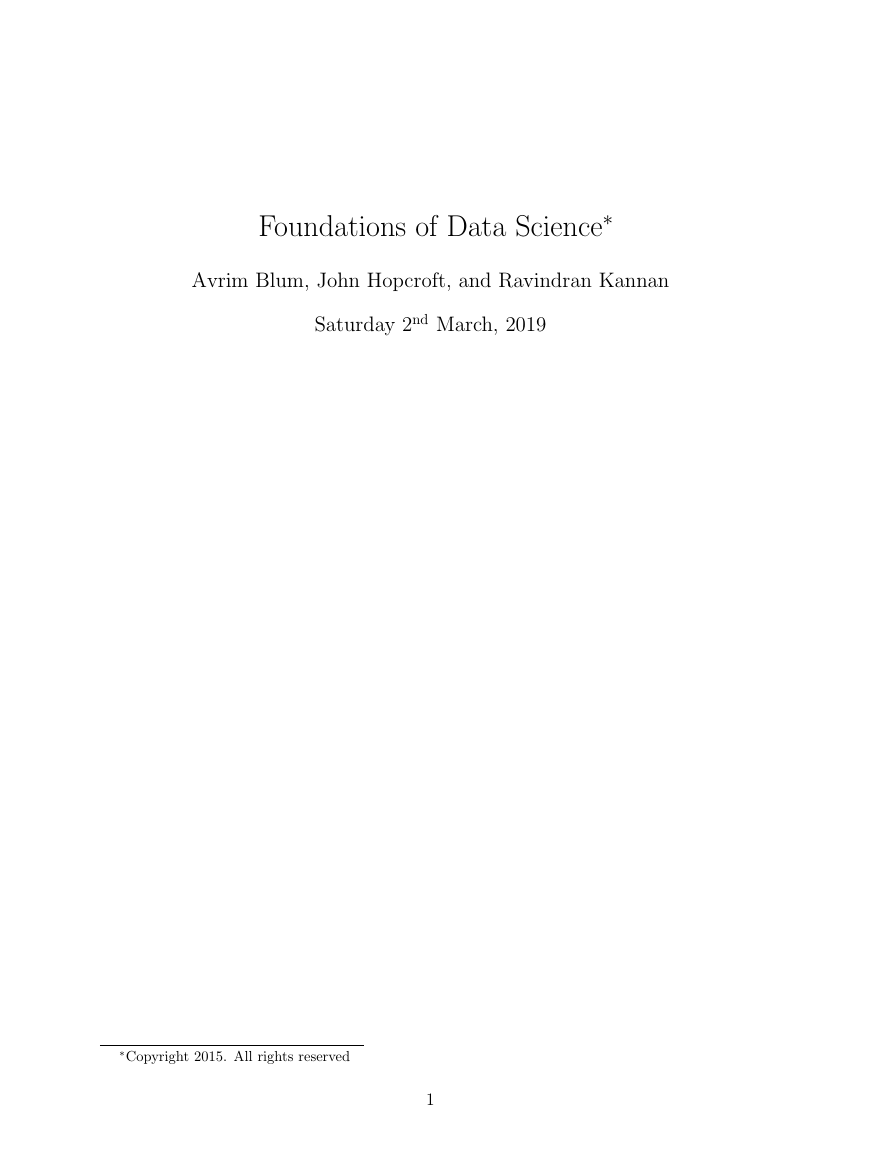
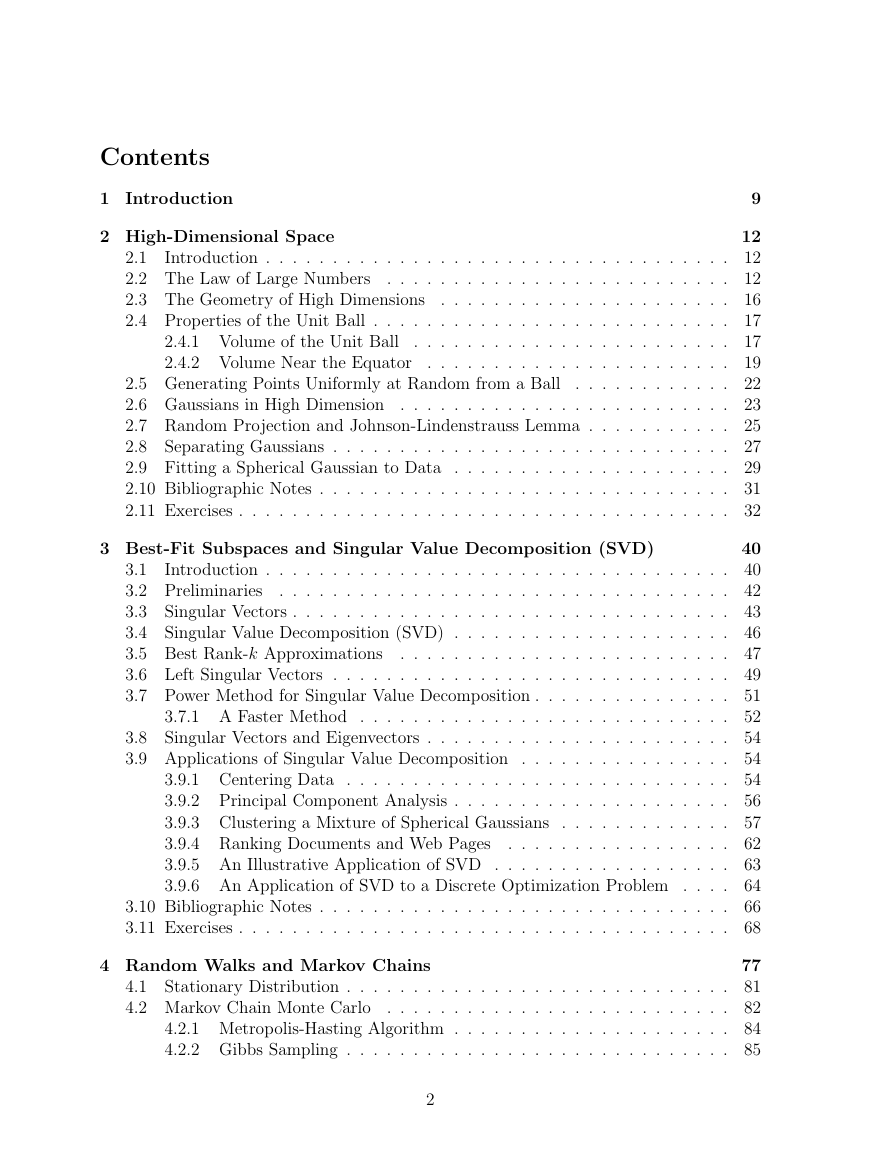
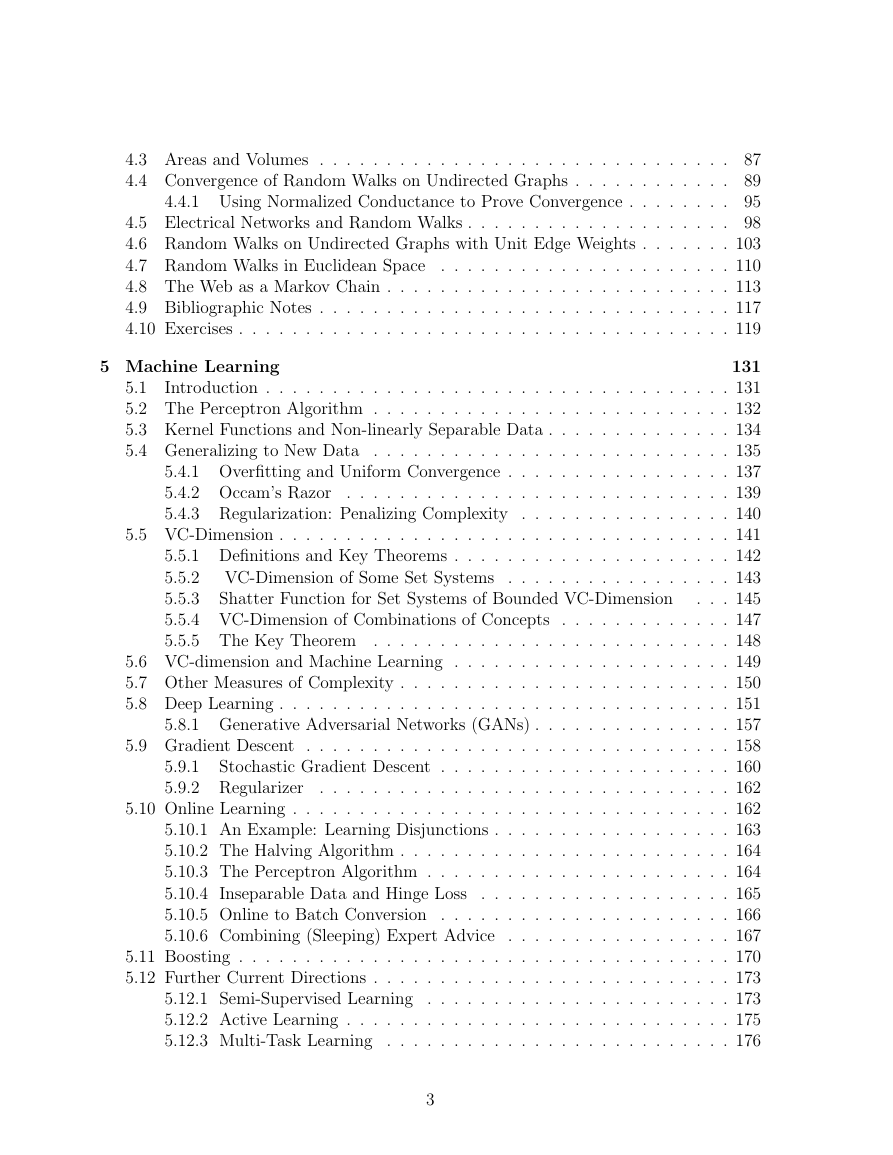
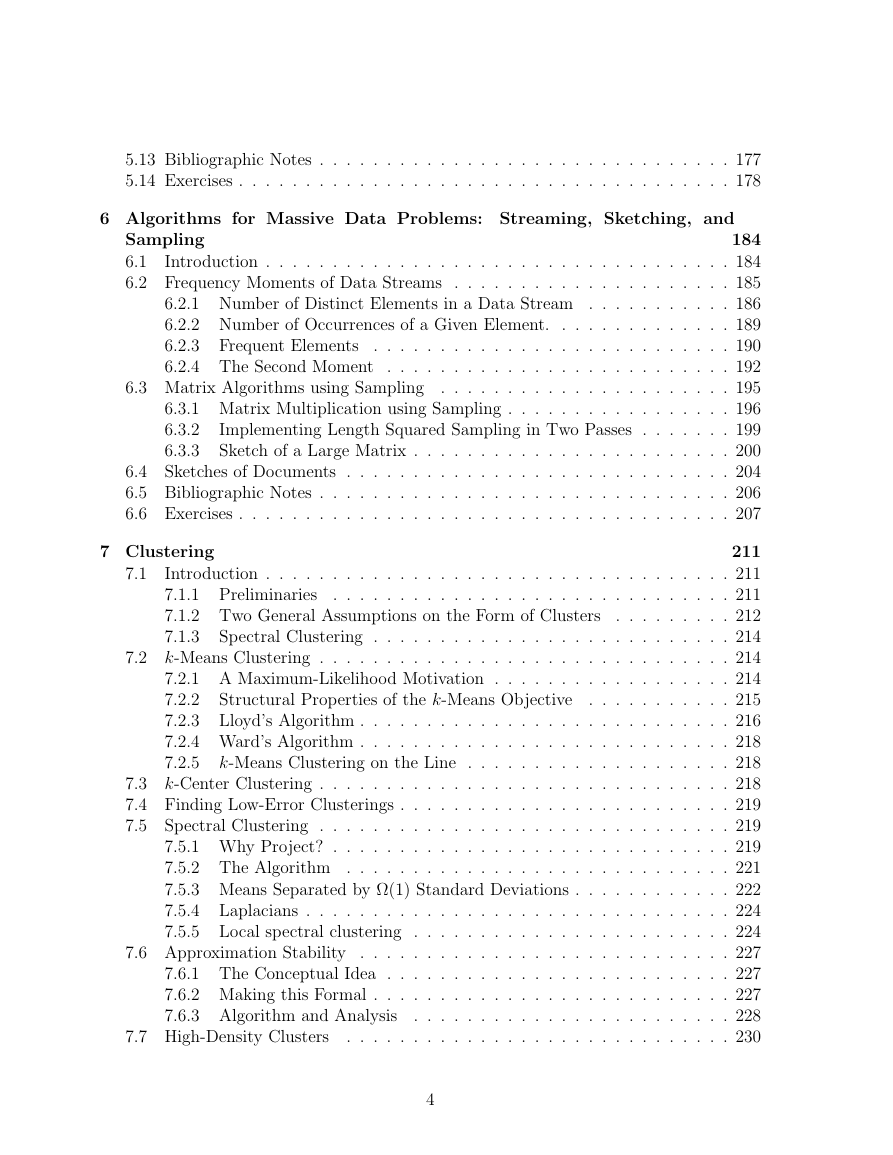
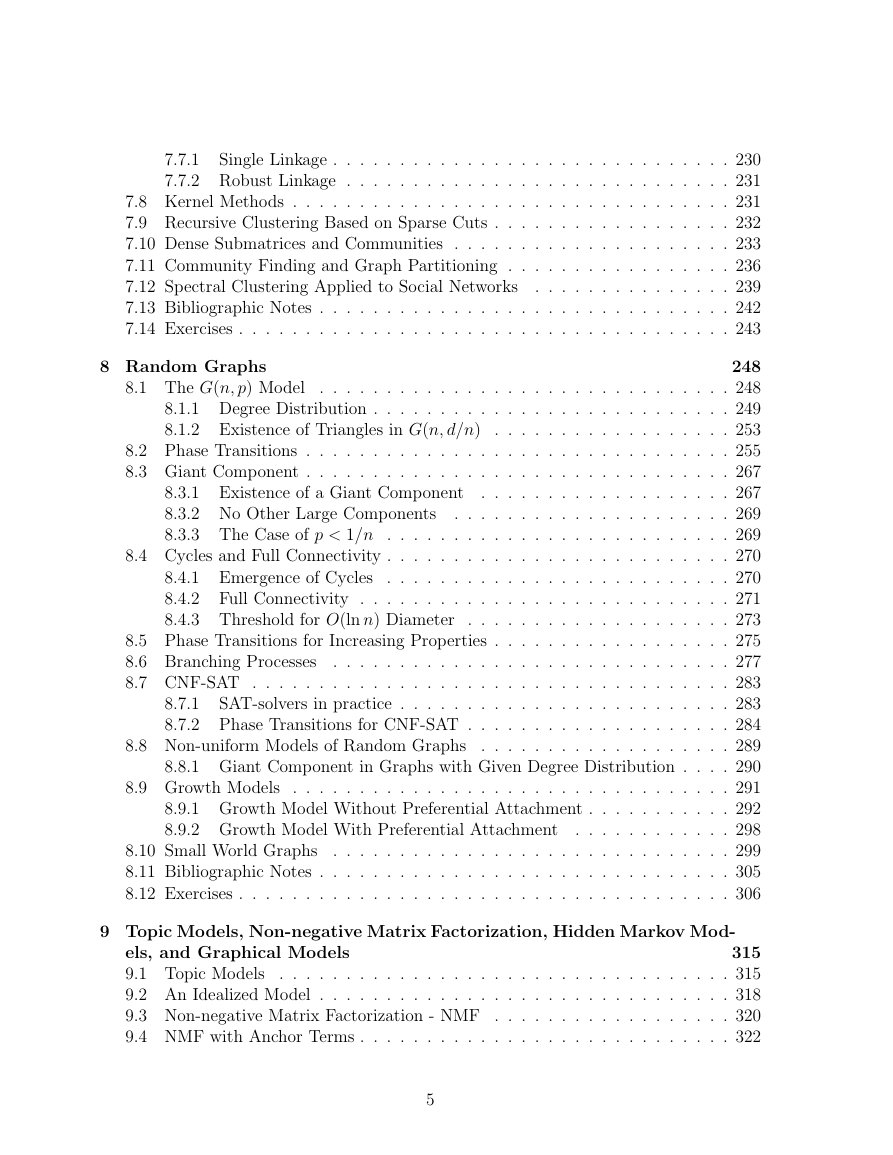
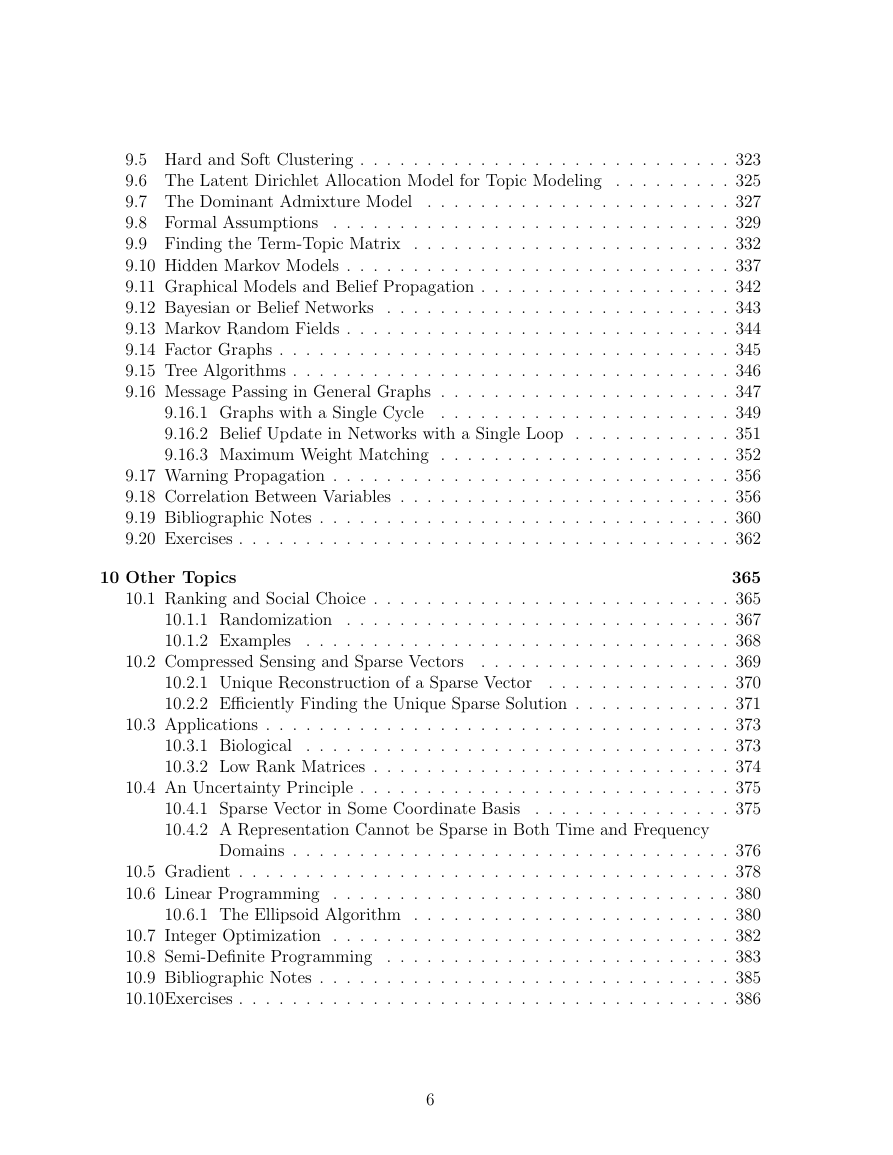
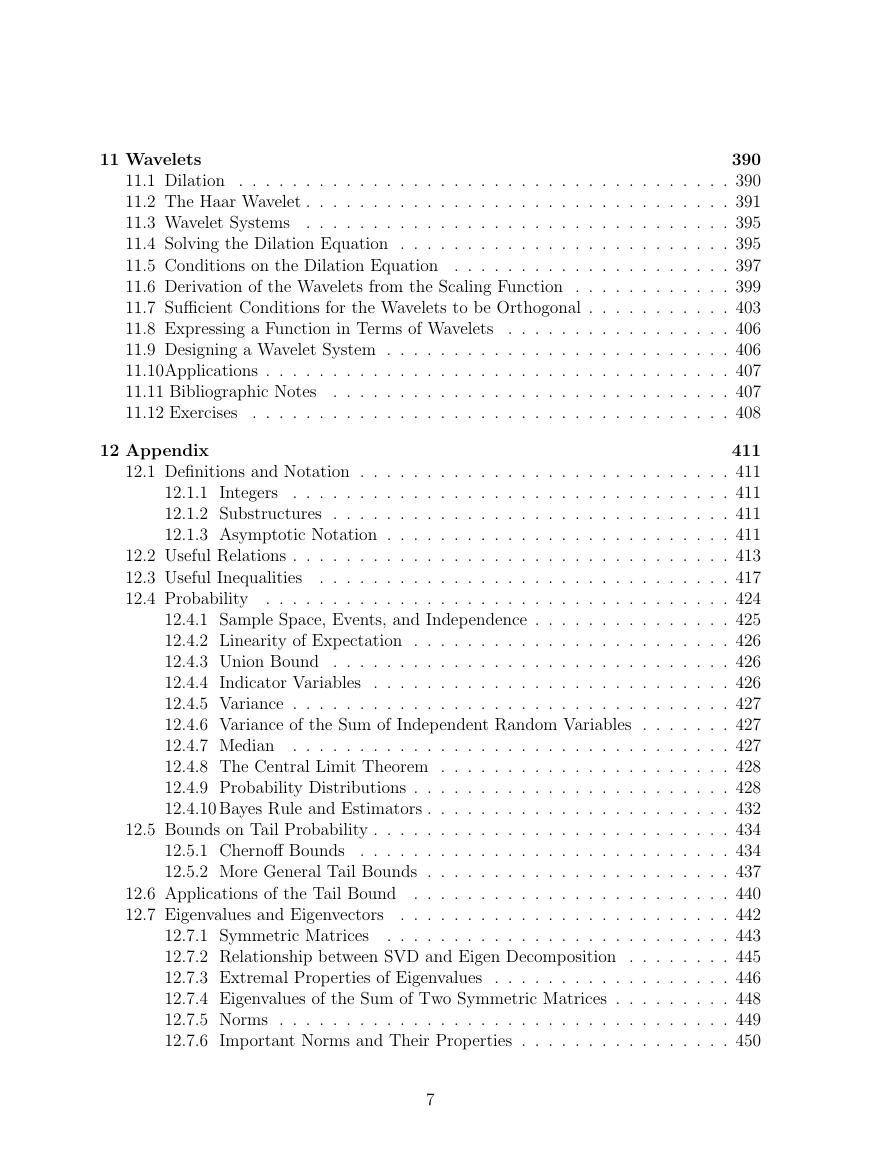









 2023年江西萍乡中考道德与法治真题及答案.doc
2023年江西萍乡中考道德与法治真题及答案.doc 2012年重庆南川中考生物真题及答案.doc
2012年重庆南川中考生物真题及答案.doc 2013年江西师范大学地理学综合及文艺理论基础考研真题.doc
2013年江西师范大学地理学综合及文艺理论基础考研真题.doc 2020年四川甘孜小升初语文真题及答案I卷.doc
2020年四川甘孜小升初语文真题及答案I卷.doc 2020年注册岩土工程师专业基础考试真题及答案.doc
2020年注册岩土工程师专业基础考试真题及答案.doc 2023-2024学年福建省厦门市九年级上学期数学月考试题及答案.doc
2023-2024学年福建省厦门市九年级上学期数学月考试题及答案.doc 2021-2022学年辽宁省沈阳市大东区九年级上学期语文期末试题及答案.doc
2021-2022学年辽宁省沈阳市大东区九年级上学期语文期末试题及答案.doc 2022-2023学年北京东城区初三第一学期物理期末试卷及答案.doc
2022-2023学年北京东城区初三第一学期物理期末试卷及答案.doc 2018上半年江西教师资格初中地理学科知识与教学能力真题及答案.doc
2018上半年江西教师资格初中地理学科知识与教学能力真题及答案.doc 2012年河北国家公务员申论考试真题及答案-省级.doc
2012年河北国家公务员申论考试真题及答案-省级.doc 2020-2021学年江苏省扬州市江都区邵樊片九年级上学期数学第一次质量检测试题及答案.doc
2020-2021学年江苏省扬州市江都区邵樊片九年级上学期数学第一次质量检测试题及答案.doc 2022下半年黑龙江教师资格证中学综合素质真题及答案.doc
2022下半年黑龙江教师资格证中学综合素质真题及答案.doc